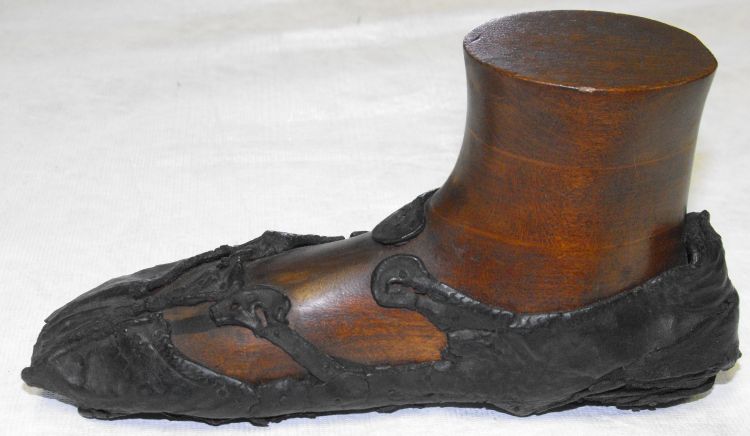It wasn’t just soldiers who lived on the Wall. Alongside the men lived civilians: wives, families, slaves, and the camp followers.
We know little about their lives, and know the names of just three civilians, but a handful of objects have survived to give us tantalising hints of their presence.

Lady's Shoe. © Hunterian Museum
Commanding officers brought their families with them. ‘On 11 September, for the day of the celebration of my birthday, I give you a warm invitation to make sure that you come to us’, writes Claudia Severa, wife of an army officer on Hadrian’s Wall. We can assume that the wives along the Antonine Wall enjoyed visits to each other and shared news of their children too. One woman, Vibia Pacata, the wife of a centurion of the Sixth Legion based at Westerwood dedicated an altar to the goddesses of the woodland and the crossroads.
A civilian village, the ‘vicus,’ would often grow up around the fort. This was where the camp followers lived: the merchants, shop keepers and girlfriends who followed the cohorts around the Roman empire and made their living from them. Sadly, we have little concrete evidence about these people and how they lived on the Antonine Wall, and only a few traces of the settlements have so far been found.

© Hunterian Museum
A tombstone found not far from Bar Hill was erected by a man named Salmanes for his 15-year old son, also called Salmanes (above). Salmanes may have been an eastern trader with links to the Syrian cohort based at the fort. Close by was found the tombstone bearing the name of a woman called Verecunda – possibly a slave girl in the service of a commanding officer.






